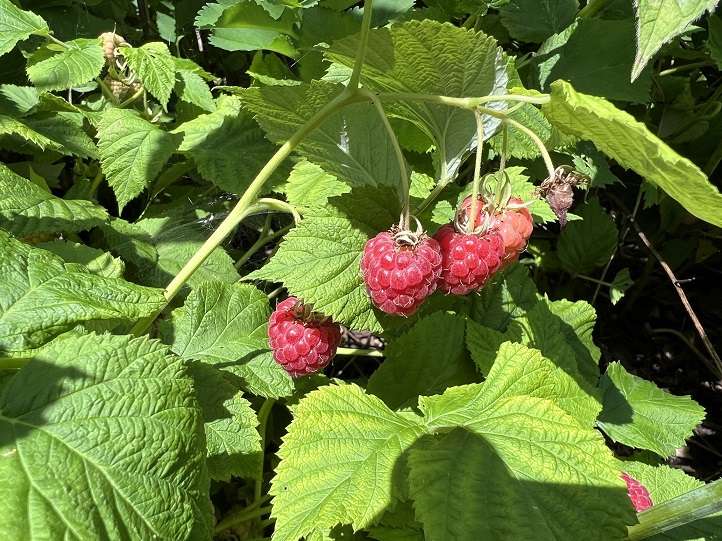SMALL SPACE GARDENING: Prune raspberries for an abundant harvest
 by Melinda Myers
by Melinda Myers
A bit of summer pruning goes a long way to keeping your raspberries healthy and productive. So, get out the mosquito netting, long sleeves, and pruners and get busy.
The summer harvest is produced on 2-year-old canes called floricanes. Remove those that bore fruit to ground level once your harvest is complete. These canes will not produce more fruit and their presence can increase the risk of insect and disease problems. This is also a good time to remove damaged, insect-infested, or discolored canes.
Summer is also a good time to thin the remaining canes on summer-only bearing raspberries. Remove weak or damaged canes, leaving three or four of the sturdiest canes per foot of row or six or eight stems per hill when growing in the hill system. Thinning increases airflow and light penetration, resulting in healthier plants and a better harvest next season. Wait until next spring to reduce the height of the remaining canes. At that time, you can determine winter dieback, and damage, and prune accordingly.
Everbearing raspberries are often called fall raspberries and form fruit on first-year canes called primocanes. You can manage these types of raspberries for a single fall harvest only. Wait until the plants are dormant then cut the whole planting back to ground level. There will be a larger and earlier harvest when pruning everbearing raspberries this way. Although this pruning technique eliminates the summer crop, it is much easier, less time-consuming, and eliminates animal and winter damage in just one cut.
The other option is to prune everbearing raspberries for a fall and summer harvest. The new growth produces the fall crop. These canes are left to produce berries the following summer. Prune these two-year-old canes after the summer harvest as you would on a summer-only bearing raspberry.
Maximize your summer and fall harvest by planting a summer and a fall-bearing raspberry patch. You’ll enjoy summer raspberries from one planting plus a larger, earlier harvest from the fall-bearing raspberries when pruning all those canes to ground level each year during the dormant season.
Don’t let a lack of space keep you from growing delicious raspberries high in fiber and vitamin C. Plant, train, and use raspberries as a hedge in your landscape. Or grow the new compact and thornless Raspberry Shortcakeâ in a container or any sunny small space in your garden. You may not be freezing a large harvest from a single pot of raspberries, but you will enjoy fresh-from-the-garden raspberries even in your small space.
Melinda Myers has written over 20 gardening books, including Midwest Gardener’s Handbook, 2nd Edition and Small Space Gardening. She hosts The Great Courses “How to Grow Anything” instant video and DVD series and the nationally syndicated Melinda’s Garden Moment radio program. Myers is a columnist and contributing editor for Birds & Blooms magazine. Myers’ website is www. MelindaMyers.com.
Responsible journalism is hard work!
It is also expensive!
If you enjoy reading The Town Line and the good news we bring you each week, would you consider a donation to help us continue the work we’re doing?
The Town Line is a 501(c)(3) nonprofit private foundation, and all donations are tax deductible under the Internal Revenue Service code.
To help, please visit our online donation page or mail a check payable to The Town Line, PO Box 89, South China, ME 04358. Your contribution is appreciated!



Leave a Reply
Want to join the discussion?Feel free to contribute!